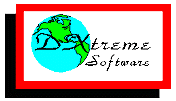
Two new elements are added.
The double half-wave detector, and the module of FSK-2 demodulator.
The double half-wave detector, generally, has narrow enought area of application, and as a whole, it strongly loses to the quadrature detector. However, has a high processing speed, and in some cases, it allows to solve problems of reception of clock frequency of manipulation, while other methods work very poorly or don't work absolutely.
Usually, the problems with reception of clock frequency of manipulation occur, when the record represents as not the radiosignal, but the voltage of manipulation, received after FSK, FМ or АМ detector.
Just for such cases the double-half wave detector, which solves this problem successfully had been added. In generall it concerns FSK-2, modulations C4FM and some other signals.

More important updating, is the introduction of module of FSK-2 demodulator.
Current realization is the base concept, and means further development.
Synchronization on clock frequency is carried out manually (at least currently). It isn't difficult, but demands some skills.
Exact phasing is should be done in last moment/time!
The first step: to expose/specify exact clock frequency. It should be done by zero beating, which are well visible at the corresponding scale on an axis X. Frequency is entered directly in manual from the keyboard (at it finished of input must be pressing of "Enter" key), or changes through control elements on the panel.
The second step: is the installation of rough phasing through the slider in the bottom of display window.
Last step, is adjustment of a phase for reception of as much as possible accurate clear picture.
After all these actions, a line of action/line of solution should be exposed in the necessary position (usually on the middle), if the signal is qualitative enough, and it was possible to receive a good picture of separation of levels. And it becomes possible to get the bit stream. All what is above the line of solution is considered to 1(0), all that is below the line of solution to 0(1).
I want to underline, although the module is intended for FSK-2 signals, it has much more extensive application field, as all SA tools.
In particular, with its help it is possible to realize the following tasks easily:
1 - to identify such kind of modulation as C4FM
2 - To realize a quality estimation of various signals etc.

Good Luck~






























